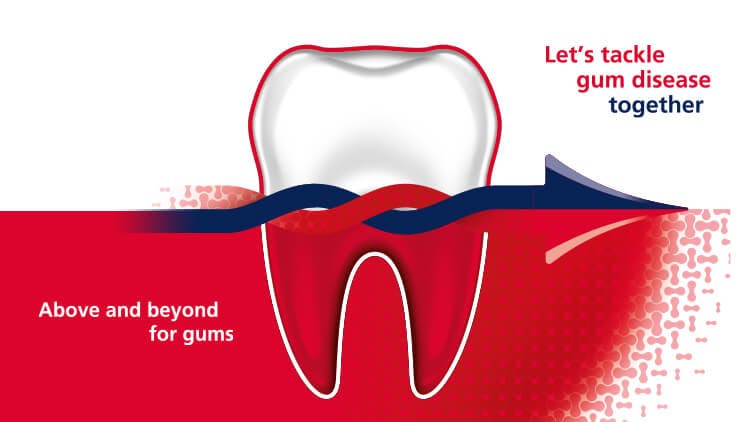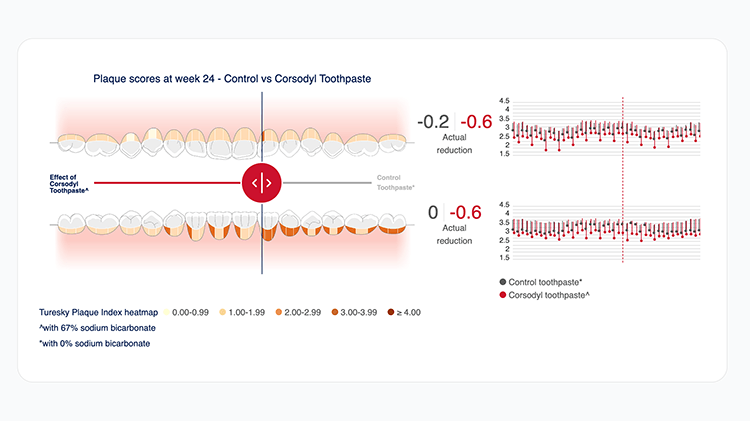Gingivitis prevention & management

Could the solution already be part of your patients’ routine?
In this article we will be looking at some scientific evidence on the role of specific toothpaste formulations in enhancing the removal of plaque as an adjunct to brushing. By more effectively removing plaque, these formulations can further support the efforts of dental professionals to deliver effective care within their patients’ homes.
Read on to learn more
See the evidence for 67% sodium bicarbonate in toothpaste
A concentration of 67% sodium bicarbonate in toothpaste has been shown to be efficacious in breaking down biofilms and reducing plaque.6,7 In addition, 67% sodium bicarbonate toothpastes have a relative dentin abrasivity of 70 or less, meaning that they are only mildly abrasive.9 Some patients consider the taste of sodium bicarbonate to be too salty. However, we now have sensorially superior formulations that counteract this potential downside.10
In addition, a pooled analysis of similarly designed clinical trials was conducted to examine the effects that a 67% sodium bicarbonate dentifrice had on plaque and gingivitis at individual tooth sites, tooth regions and on the whole mouth. This analysis found that twice-daily use of a sodium bicarbonate toothpaste effectively removed plaque from all tooth sites and resulted in clinically significant improvements in measures of gingival health compared to a non-sodium bicarbonate toothpaste, both overall and for all tooth regions investigated.11
Click to watch the video to see how toothpaste with sodium bicarbonate can help enhance your patients’ clean.
Read on to learn more









